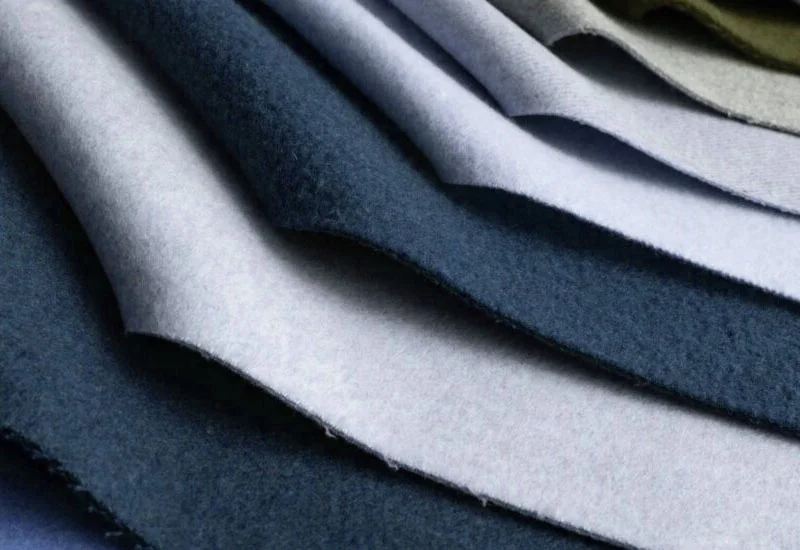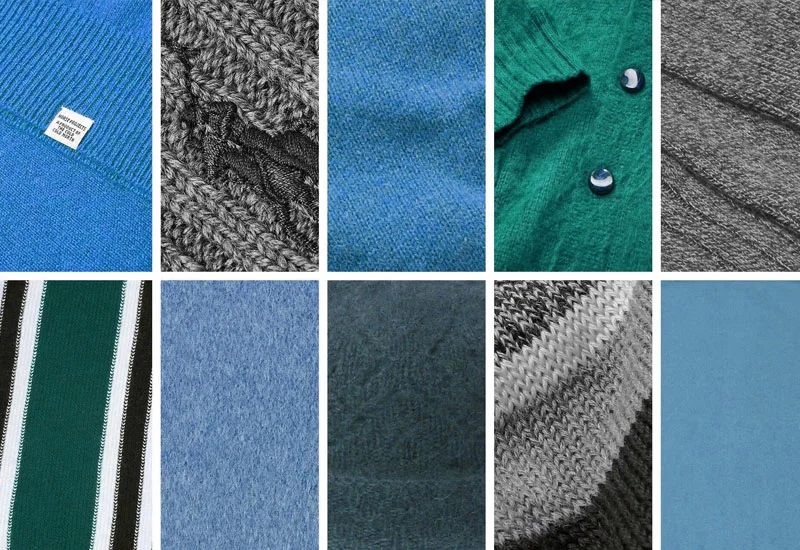Wool fabric is a versatile and timeless material that has been used in textiles for centuries. Wool comes from the wool of sheep and other animals and has unique qualities that set it apart from synthetic fabrics. Its natural properties, sustainability, and comfort make it a popular choice for applications ranging from clothing to home furnishings. In this article, we’ll take a deep dive into the various types of wool fabric, explore their properties, and highlight their uses in everyday life.
What Is Wool Fabric?

Wool fabric is primarily made from wool, which undergoes a multi-step process to transform it from raw wool to a usable textile. The process begins with shearing, which is usually done once a year, when the wool is carefully cut from the sheep. The wool is then cleaned to remove dirt, grease, and impurities through a process called washing.
What Type of Fabric is Wool?

What is wool fabric, Wool is a natural textile fabric made from the fibers of sheep, goats, or other animals like alpacas and llamas. It is known for its warmth, softness, and durability, making it a popular choice for various clothing and textile applications.
Wool fabric is highly breathable, moisture-wicking, and has natural insulating properties, which help regulate body temperature in both warm and cold weather.
Additionally, wool is naturally resistant to wrinkles, odors, and fire, making it a versatile and practical material for a wide range of garments and household textiles.
| Fabric name | Wool |
| Fabric also known as | Cashmere, fleece, fur, hair, tweed |
| Fabric composition | Hair fibers from various animals |
| Fabric possible thread count variations | Up to 200 with more fragility at higher thread counts |
| Fabric breathability | Moderately breathable |
| Moisture-wicking abilities | High |
| Moisture-wicking abilities | High |
| Heat retention abilities | High |
| Stretch ability (give) | Medium |
| Prone to pilling/bubbling | High |
| Country where fabric was first produced | Ancient Iran |
| Biggest exporting/producing country today | Australia |
| Recommended washing temperatures | Cool or warm |
| Commonly used in | Sweaters, socks, suits, pants, underwear, hats, gloves, other forms of cold-weather gear, carpets, firefighting gear, insulation |
Characteristics of Wool Fabric
| Characteristic | Description |
|---|---|
| Insulating | Provides warmth in cold weather while being breathable and comfortable. |
| Softness | Soft and gentle on the skin, offering comfort for extended wear. |
| Durable | Resilient and long-lasting, withstands stretching, bending, and compression. |
| Moisture-wicking | Absorbs moisture vapor and releases it, keeping the wearer dry. |
| Odor-resistant | Naturally repels odors and inhibits bacterial growth. |
| Wrinkle-resistant | Recovers its shape after being stretched or compressed, minimizing wrinkles. |
| Flame-retardant | Difficult to ignite and self-extinguish when the flame source is removed. |
| Versatile | Can be woven or knitted into various textures and weights for diverse uses. |
| Biodegradable | Renewable and decomposes naturally without releasing harmful chemicals. |
| Natural UV protection | Absorbs UV radiation, providing protection against sun exposure. |
What Different Types of Wool Fabric Are There?

Merino Wool:
Sourced from Merino sheep, this wool is known for its fine, soft fibers. It is highly prized for its comfort, warmth, and breathability, making it ideal for high-quality clothing like sweaters, base layers, and activewear.
Cashmere:
Obtained from the undercoat of cashmere goats, cashmere wool is exceptionally soft, lightweight, and warm. It is often used for luxurious items such as sweaters, scarves, and shawls.
Alpaca Wool:
Sourced from alpacas, this wool is soft, durable, and warmer than sheep’s wool. It is hypoallergenic and often used in sweaters, blankets, and other cozy garments.
Angora Wool:
Derived from Angora rabbits, this wool is known for its fluffy texture and exceptional warmth. It is often blended with other fibers to add softness and warmth to garments.
Lambswool:
This is the first shearing of a lamb, typically around seven months old. Lambswool is very soft, smooth, and elastic, making it ideal for fine knitwear and high-quality textiles.
Shetland Wool:
Sourced from Shetland sheep, this wool is coarser and more durable. It is often used in traditional knitwear, such as Fair Isle sweaters and tweeds.
Mohair:
Obtained from Angora goats, mohair is silky, strong, and lustrous. It is often used in high-end fashion, and upholstery, and blended with other fibers for added texture and sheen.
Tweed:
A rough, woolen fabric traditionally made in Scotland, tweed is known for its durability and resistance to the elements. It is commonly used in jackets, suits, and outerwear.
Worsted Wool:
This type of wool undergoes a special combing process to align the fibers, creating a smooth and strong yarn. Worsted wool is commonly used in high-quality suits, trousers, and formal wear.
Felted Wool:
Created by matting and pressing wool fibers together, felted wool is dense and durable. It is used in hats, crafts, and various industrial applications. after learning about so many different wool fabrics, I became more and more specific about what is wool fabric.
How to Judge the Authenticity of Wool Fabric?

Burn Test:
Procedure:
Carefully cut a small, inconspicuous piece of the fabric. Use tweezers to hold the fabric and bring it close to a flame.
Authentic Wool:
Burns slowly, smells like burning hair and leaves a crumbly, black ash.
Synthetic Fibers:
Burn quickly, may melt, and typically emit a chemical or plastic-like odor.
Feel and Texture:
Authentic Wool:
Feels soft, warm, and slightly coarse. It should be springy and resilient when compressed.
Synthetic Fibers:
Often feels smooth, slick, or too uniformly soft without the natural texture of wool.
Visual Inspection:
Authentic Wool:
May have slight variations in fiber thickness and color. Wool fibers are typically crimped.
Synthetic Fibers:
Often appear uniform and may lack the natural crimp and irregularities of wool.
Water Absorption Test:
Procedure:
Sprinkle a few drops of water on the fabric.
Authentic Wool:
Absorbs moisture quickly without feeling wet. Wool can hold a significant amount of moisture without becoming saturated.
Synthetic Fibers:
Water may bead up on the surface and take longer to absorb.
Label Check:
Authentic Wool:
Check for labels or tags that indicate the fabric content. Genuine wool products often have certifications or marks, such as the Woolmark logo.
Synthetic Fibers:
May lack specific wool certifications or have labels indicating a blend with synthetic materials.
For the question of what is wool fabric, it is more necessary to distinguish the truth from the false.
Care Instructions for Wool Fabric

Read the Label:
Always check the care label attached to the garment for specific instructions. Different wool blends and finishes may have unique care requirements.
Hand Wash or Dry Clean:
Most wool garments should be hand-washed or dry-cleaned to avoid damage. Use cold or lukewarm water and a mild detergent designed for wool.
Avoid Agitation:
Handle wool gently to prevent felting or shrinking. Avoid wringing or twisting the fabric and instead gently squeeze out excess water.
Dry Flat:
After washing, reshape the garment and lay it flat on a clean towel to air dry. Avoid hanging wool garments, as this can cause stretching or distortion.
Use a Steamer:
To remove wrinkles or refresh the fabric, use a handheld steamer or steam iron on a low setting. Avoid pressing directly on the wool fabric to prevent crushing the fibers.
Store Properly:
Store wool garments in a cool, dry place away from direct sunlight and moisture. Avoid hanging heavy items on wool garments to prevent stretching.
Avoid Moths:
Wool is susceptible to damage from moth larvae. Store wool items in sealed containers or use moth repellents such as cedar blocks or lavender sachets.
Pilling Removal:
Use a lint roller or a fabric shaver to remove any pilling that may occur on wool garments over time. Be gentle to avoid damaging the fabric.
Spot Clean:
For minor stains, gently blot the area with a clean, damp cloth and mild detergent. Avoid rubbing, as this can spread the stain or damage the fibers.
Air Out:
Occasionally, hang wool garments in a well-ventilated area to allow them to air out and refresh. Avoid prolonged exposure to direct sunlight, as this can cause fading.
Comparing Wool with Other Fabrics
| Feature | Wool | Cotton | Polyester | Silk | Linen |
|---|---|---|---|---|---|
| Source | Animal fibers (sheep, goats, etc.) | Plant fibers (cotton plants) | Synthetic (petroleum-based) | Animal fibers (silkworms) | Plant fibers (flax plants) |
| Insulation | Excellent | Moderate | Low to moderate | Moderate | Low |
| Breathability | High | High | Low to moderate | High | High |
| Softness | Soft to coarse | Soft | Varies (usually smooth) | Very soft | Crisp, can be coarse |
| Durability | High | High | Very high | Moderate | High |
| Moisture-wicking | Excellent | Good | Poor to moderate | Good | Excellent |
| Wrinkle Resistance | Good | Poor | Excellent | Poor | Poor |
| Elasticity | High (naturally elastic) | Low | High | Low | Low |
| Odor Resistance | High | Low | Low | Moderate | Low |
| Fire Resistance | Naturally flame-retardant | Flammable | Highly flammable | Flammable | Flammable |
| Care | Hand wash or dry clean | Machine wash, tumble dry | Machine wash, tumble dry | Hand wash or dry clean | Hand wash or machine wash, air dry |
| Eco-friendliness | Biodegradable, renewable | Biodegradable, renewable | Non-biodegradable, non-renewable | Biodegradable, renewable | Biodegradable, renewable |
| Price Range | Generally higher | Generally moderate | Generally lower | Generally higher | Generally moderate |
| Uses | Cold-weather clothing, suits, blankets | Everyday clothing, bed linens Quilting fabric | Activewear, outerwear, blends | High-end clothing, scarves, ties | Summer clothing, home textiles |
FAQs
what is the wool peach fabric?
Despite its name, wool peach is not made from wool. It is a synthetic fabric, typically made from polyester, that has a soft, peach-skin-like texture. It’s often used in garments that require a smooth, soft touch and good drape.
what fabric is similar to wool?
Fabrics that are similar to wool in terms of warmth and texture include cashmere, alpaca, mohair, and angora. Synthetic alternatives like acrylic and polyester fleece can also mimic wool’s insulating properties.
what is a wool fabric?
A natural textile made from the fleece of sheep, goats, alpacas, or llamas. It is known for its warmth, durability, moisture-wicking properties, and natural elasticity.
what is a woolen fabric?
A type of wool fabric made from carded yarns, which are not tightly twisted, resulting in a soft, fuzzy texture. Woolen fabrics are warm and often used for sweaters, blankets, and other cozy garments.
what is boiled wool fabric?
Made by processing wool fabric in hot water and agitation, causing the fibers to mat together and create a dense, felted texture. It is thick, warm, and often used for outerwear and heavy garments.
what is faux wool fabric?
Faux wool fabric is a synthetic material designed to mimic the appearance and feel of natural wool. It is typically made from man-made fibers like polyester, acrylic, or nylon, which are woven or knitted to replicate wool’s texture and warmth. Faux wool is often used in clothing and accessories as a more affordable and animal-friendly alternative to real wool.
Conclusion
What is Wool fabric, derived from animal fleece, which offers warmth, softness, and durability. It undergoes shearing, cleaning, carding, spinning, weaving, and finishing processes. Various types include Merino, cashmere, and alpaca wool. Authenticity can be judged through burn tests, feel, water absorption, and label checks.
Care involves hand washing, drying flat, steaming, and proper storage. Wool is distinct for its insulating, breathable, and moisture-wicking properties. It surpasses synthetics in authenticity, comfort, and longevity.
